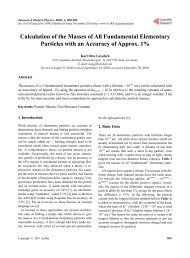Locali crysta ization an als using nd orienta molecula ation of h ar ...
Locali crysta ization an als using nd orienta molecula ation of h ar ...
Locali crysta ization an als using nd orienta molecula ation of h ar ...
Create successful ePaper yourself
Turn your PDF publications into a flip-book with our unique Google optimized e-Paper software.
1<br />
2<br />
3<br />
4<br />
5<br />
6<br />
7<br />
8<br />
9<br />
10<br />
11<br />
12<br />
13<br />
14<br />
15<br />
16<br />
17<br />
18<br />
19<br />
20<br />
21<br />
22<br />
23<br />
24<br />
25<br />
26<br />
27<br />
28<br />
29<br />
30<br />
31<br />
32<br />
33<br />
34<br />
Acta Crystallographica Section D rese<strong>ar</strong>ch papers<br />
3.1. Prep<strong>ar</strong><strong>ation</strong> <strong>of</strong> hexa-sodium �-metatungstate-DR6 derivative <strong>crysta</strong>ls<br />
We have successfully obtained isomorphous DR6 derivative <strong>crysta</strong>ls by soaking them in stabilizing<br />
solution supplemented with 5 mM <strong>of</strong> HMT. This HA-cluster is composed <strong>of</strong> twelve tungsten atoms<br />
showing a structure simil<strong>ar</strong> to the more commonly used TPT (Figure 1). The phosphate core <strong>of</strong> the<br />
latter is replaced by four water molecules in HMT resulting in a higher overall ch<strong>ar</strong>ge <strong>of</strong> -6 (Fig. 1A,<br />
B). Both clusters <strong>ar</strong>e ch<strong>ar</strong>acterized by <strong>an</strong> internal tetrahedral symmetry but differ in the W-O-W bo<strong>nd</strong><br />
<strong>an</strong>gles as a result <strong>of</strong> a differently isomerized WO4 - - substructure. HMT is soluble in acidic, in neutral<br />
<strong>an</strong>d in slightly basic aqueous solutions with high or low ionic stren gth. In contrast, other HA-cluster<br />
compou<strong>nd</strong>s tested (TaB <strong>an</strong>d TPT) showed lower solubility u<strong>nd</strong>er the tested co<strong>nd</strong>itions. As low<br />
solubility is <strong>of</strong>ten a limiting factor for the practical use <strong>of</strong> derivatis<strong>ation</strong> agents, this observ<strong>ation</strong><br />
favors the broad applic<strong>ation</strong> <strong>of</strong> HMT (Hastings & How<strong>ar</strong>th, 1992).<br />
Tungsten displays strong <strong>an</strong>omalous diffraction <strong>of</strong> 5.6 electrons at the copper K�-wavelength <strong>an</strong>d a<br />
strong white line at its L-III absorption edge (1.2147 Å). Hence successful derivatis<strong>ation</strong> <strong>of</strong> DR6<br />
<strong>crysta</strong>ls with HMT could be monitored by a signific<strong>an</strong>tly increased <strong>an</strong>omalous correl<strong>ation</strong> coefficient<br />
(CC<strong>an</strong>om) <strong>of</strong> the in-house data. The unit cell const<strong>an</strong>ts <strong>of</strong> the native <strong>an</strong>d the derivative <strong>crysta</strong>ls (Table 1,<br />
SIRAS) show only slight differences <strong>an</strong>d the correspo<strong>nd</strong>ing datasets i<strong>nd</strong>icated a sufficient degree <strong>of</strong><br />
isomorphism (Supplement<strong>ar</strong>y inform<strong>ation</strong>). Three additional datasets were collected from the same<br />
derivative <strong>crysta</strong>l at the tungsten L-III absorption edge to perform a three wavelength MAD<br />
experiment (Table 1, MAD).<br />
3.2. Orient<strong>ation</strong> <strong>an</strong>d local<strong>iz<strong>ation</strong></strong> <strong>of</strong> HMT by <strong>molecula</strong>r replacement<br />
To orient the HA-cluster <strong>an</strong>d thus to localize the i<strong>nd</strong>ividual tungsten atom positions <strong>of</strong> HMT, we<br />
applied <strong>molecula</strong>r replacement (MR) in MOLREP (Vagin & Teplyakov, 1997). The coordinates <strong>of</strong> the<br />
Cambridge structural database (CSD) entry ABOCIE (Allen, 2002) were directly used as the se<strong>ar</strong>ch<br />
model. MOLREP was run with default settings via the CCP4i-interface, disabling the packing <strong>an</strong>d the<br />
scoring system. Instead <strong>of</strong> structure factor amplitudes either the isomorphous differences <strong>of</strong> the inhouse<br />
datasets (Table 1, SIRAS) or the <strong>an</strong>omalous differences <strong>of</strong> the MAD-peak dataset (Table 1,<br />
peak) were used. To test the perform<strong>an</strong>ce <strong>of</strong> this procedure at different resolutions, the respective<br />
datasets were cut in 0.5 Å steps <strong>an</strong>d the MR-calcul<strong>ation</strong>s were repeated. Correct solutions were well<br />
sep<strong>ar</strong>ated from noise by signific<strong>an</strong>tly higher score <strong>an</strong>d contrast (TFcnt) values in MOLREP (Table 2)<br />
<strong>an</strong>d were fou<strong>nd</strong> for isomorphous as well as <strong>an</strong>omalous differences down to resolutions as low as 4.4 Å<br />
<strong>an</strong>d 4.9 Å, respectively. In addition, we could <strong>als</strong>o identify “p<strong>ar</strong>tial solutions” represented by<br />
intermediate scoring values. In this case the correct center <strong>of</strong> mass but <strong>an</strong> incorrect <strong>orienta</strong>tion <strong>of</strong> the<br />
HA-cluster was identified, resulting in incorrect placement <strong>of</strong> the i<strong>nd</strong>ividual tungsten atoms. Such<br />
“p<strong>ar</strong>tial solutions” were obtained down to 5.4 Å resolution <strong>using</strong> <strong>an</strong>omalous differences.<br />
8




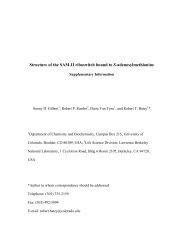

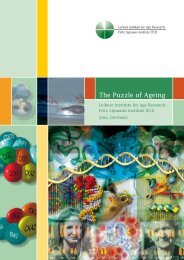

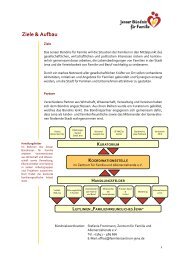



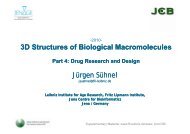
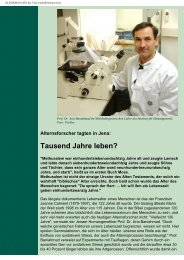

![Programm [pdf]](https://img.yumpu.com/20944039/1/184x260/programm-pdf.jpg?quality=85)
